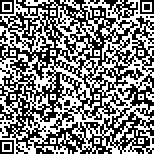下载中心
优秀审稿专家
优秀论文
相关链接
摘要

介绍了中国陆地范围的长序列AVHRR数据集及处理方法。数据处理链包括辐射标定、导航定位、几何精纠正、云检测、大气纠正、双向反射纠正以及多时相数据合成等一系列过程。大气校正采用SMAC方法.利用每日的大气参数对臭氧、瑞利散射、气溶胶和水汽柱等4个主要大气因子的影响进行了纠正。利用地面能见度和水汽压信息反演气溶胶光学厚度,利用最大植被指数法合成旬数据集。完成了1991-2003年的AVHRR数据集处理,形成了标准的数据集。
Scientific investigations indicate that global change information can be derived from the 1 km advanced very high resolution radiometer(AVHRR)data from NOAA satellite series.This paper describes the processing chain of China territory 1km AVHRR dataset and its applications.Twelve years of AVHRR raw data from 1991 to 2003 have been collected.A dataset of over 9000 AVHRR raw images has been archived.These images cover China terriory and he sensor includes AVHRR/2 and AVHRR/3 from NOAA-12 to NOAA-16.The processing algorithms are solicited and applied to the dataset to produce prototype and operational high level products for regional geo-science research. The processing chain uses an improved calibration method,which accounts for sensor degradation,and uses the SMAC (Simplified Method for Atmospheric Correction) method for atmospheric correction of the reflrctace measured in AVHRR channels 1 and 2.The ozone data comed from TOMS (Total Ozone Mapping Spectrometer) daily measurements,the daily water vapor and surface pressure are obtained from the CMA ( China Meteorological Administration) and the daily aweosol optical depth at a wavelength of 550 nm is retrieved from the ground visibility using a paramenterization method.The BRDF correction in AVHRR imagery is performed and the parameters required is derived from the 1:1,000,000 sacle land cover types of China. For cloud detection,the CLAVR algorithm is applied but some parameters are modified for China territory,it uses all five AVHRR channels to estimate cloud cover through a series of tests and the tests are done sequentially using threshold values. LST (Land Surface Temperature) is determined using semi-empirical method (the split window method) and separativel accounting for atmospheric attenuation and soil emissivity.Daily data are composed with MVC (Maximum NDVI Composite of 10 days NDVI data). The processing chain outputs are surface reflrctance in channel 1 and 2,brightness temperature in channels 3-5,cloud (contaminated pixel) mask associated with each pixel,land surface temperature,and NDVI.The dataset products have been used for various studies like crop condition monitoring.

